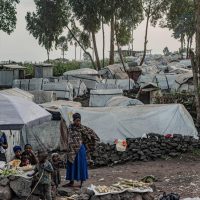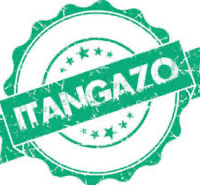The Ministry of Agriculture and Animal Resources (MINAGRI) has pledged to build the resilience of arable wetlands that were devastated by floods.
The pledge was made after farmers appealed for support, on January 23, 2024, during the 19th National Dialogue Council-Umushyikirano.
We have Mwogo marshland that crosses four districts. The marshland is usually flooded since it is not developed. There is a need for rehabilitating and developing it,” said Lenatha Mukamana, a farmer from Nyanza District in Southern Province.
With over 500 hectares, the flood-hit Mwogo marshland is located in Nyamagabe, Nyanza, Ruhango, and Huye districts. Farmers grow maize, beans, and more in the marshland.
Marie Goretti Cyomuzaza, a farmer from Gatsibo District, also appealed for support to develop two marshlands.
“These include Warufu and Kabeza marshlands. These marshlands should be developed to build resilience,” she said.
Dieudonné Byiringiro, a farmer from Nyanza District, called for rehabilitating feeder roads to facilitate the transportation of harvest from arable marshlands and hillsides.
“We need sustainable solutions to build resilience to disasters,” added Athalie Nyiranzigiyimana, a resident from Gihango sector, Rutsiro District.
While responding to farmers’ complaints, the Minister of Agriculture and Animal Resources, Ildephonse Musafiri, said Warufu marshland with around 3,000 hectares in Gatsibo District will be developed by the Commercialisation and De-Risking for Agricultural Transformation Project (CDAT).
The same project will also develop the Mwogo marshland in four districts of Southern Province, he disclosed.
“Studies are underway to ensure the development of these marshlands,” he said.
Commercialisation and De-Risking for Agricultural Transformation Project (CDAT) is a $300 million financing facility to implement the rehabilitation of irrigation systems on over 17,600 hectares, as well as land husbandry development on about 11,000 hectares.
Musafiri said 30 arable marshlands will be developed in the next three years. “This will enable farmers to grow crops during rainy and dry seasons.”
Meanwhile, Prime Minister Edouard Ngirente urged farmers to apply anti-erosion practices by planting agro-forestry trees and building terraces to reduce flooding and soil erosion.
He said over one million hectares have been terraced since 2017 to fight soil erosion and flooding and urged farmers to also plant and protect forests.
Rwanda loses more than Rwf800 billion annually due to soil erosion according to Rwanda Water Resources Board (RWB). The erosion control map shows that of the 30 districts of Rwanda, land under high erosion risk is over one million hectares [45 per cent of the total provinces’ land which is over two million hectares].









